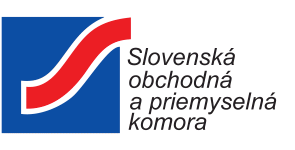Summary:
An innovative method and apparatus for contactless sensing of mechanical quantities have been developed by a team of inventors from an established Slovak university, an established Slovak scientific and research institute and a successful Slovak company.
Using the proposed method, it is possible to sense mechanical quantities such as displacement (small deformations of the elastic member) with a high accuracy.
The preferred cooperation type is license agreement.
Description:
Known methods of sensing of mechanical quantities usually utilize the sensing of deformations on the elastic body caused mainly by force or pressure. By accurate measurement of the magnitude of this deformation, while knowing mechanical properties of the material of the deformation member of the sensor, high measurement accuracy is obtained. Standard methods of sensing are based on the use of converters working on the basis of strain gauges or on the basis of magnetostrictive or piezoelectric effect. The output of such converter is electromotive voltage which contains information about the measured non-electric physical quantity.
Contactless sensing methods do not utilize direct electrical contact with the deformation member of the sensor, while deformations are sensed by means of optoelectric, capacitive and inductive principle, allowing free movement of the deformation member and sensing from a greater distance from the point of action of the load as well as sensing in various environments. Optoelectronic methods include for example sensing of deformation of optical fibers, measuring of small deformations by sensing an image and its subsequent processing or the use of known principles of measurement of distances by lasers. The disadvantage of optoelectronic methods is the requirement for suitable light conditions. Capacitive and inductive principles use the change of plate (body) distance which changes the characteristic quantity. The obvious disadvantage of these methods are specific requirements for the used materials. All of the mentioned sensing methods utilize converters to electrical voltage or current, where the disadvantage is that the voltage is an easily influenced quantity from the outer environment, thereby affecting to some extent the accuracy of the measured non-electric physical quantity.
The team of inventors from an established Slovak university, an established Slovak scientific and research institute and a successful Slovak company has managed to eliminate the above-mentioned shortcomings to a great extent. The essence of the new solution is as follows. If there is a resonant electric circuit in the electromagnetic field, the electromagnetic field is affected by this resonant electric circuit. The greatest influence on the electromagnetic field occurs when the frequency of the electromagnetic field is close to the resonance frequency of the resonant electric circuit. This effect is transmitted to the emitter in the form of a reflected electromagnetic wave. The reflected electromagnetic wave is redirected by the directional member to the evaluation/control circuit. The signal from the high-frequency generator is also transmitted to the evaluation/control circuit. The evaluation/control circuit evaluates the frequency at which the most significant influence of the electromagnetic field and the resonant electric circuit occurs and calculates the resonance frequency of the resonant electric circuit. If the resonant electric circuit is a part of the elastic body of the mechanical member, which changes its shape and also the resonance of the resonant electric circuit due to the effect of the mechanical quantity, then the resonance frequency of the resonant electric circuit, as well as the frequency evaluated by the evaluation electronics, will carry the information about the incident mechanical quantity. The source of the electromagnetic field is high-frequency voltage generated in the high-frequency generator and passing directly through the directional member to the emitter.
The use of the solution is expected in industrial fields, where accurate measurement of non-electric physical quantities is required, such as robotics, mechatronics, precision engineering, machine tools, precision measuring machines and instruments.The preferred type of cooperation is license agreement. More specified in the Partner Sought.
Type (e.g. company, R&D institution…), field of industry and Role of Partner Sought:
Field of activity:
The use of the solution is expected in industrial fields, where accurate measurement of non-electric physical quantities is required, such as robotics, mechatronics, precision engineering, machine tools, precision measuring machines and instruments.
Type of partner:
The proprietors of the technology are looking for an industrial partner for licensing the technology.
Role of partner:
Preferred type of cooperation is license agreement.
Stage of Development:
Under development/lab tested
IPR Status:
Patent(s) applied for but not yet granted,Other
External code:
TOSK20200610001








